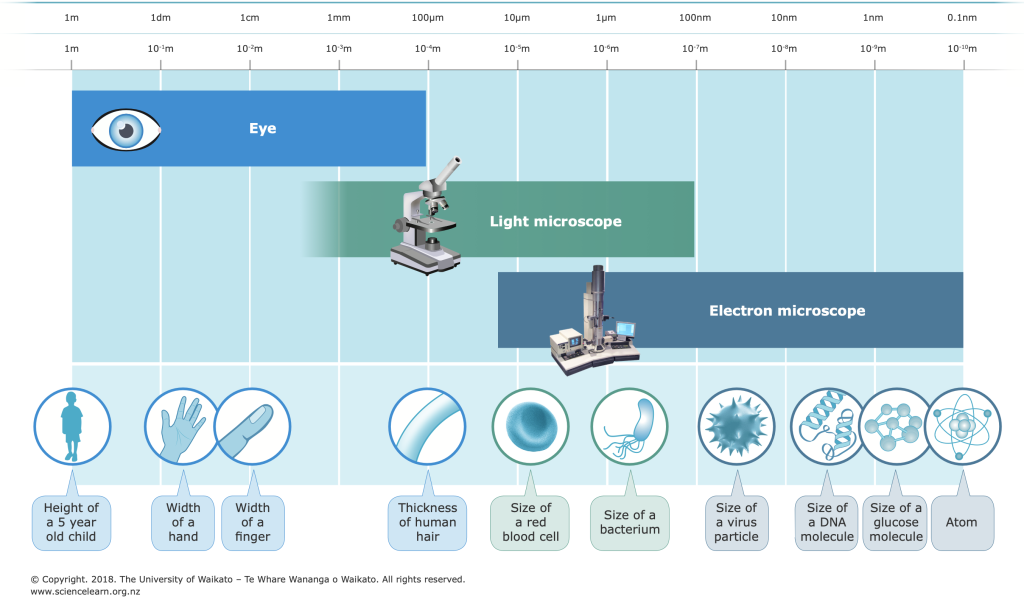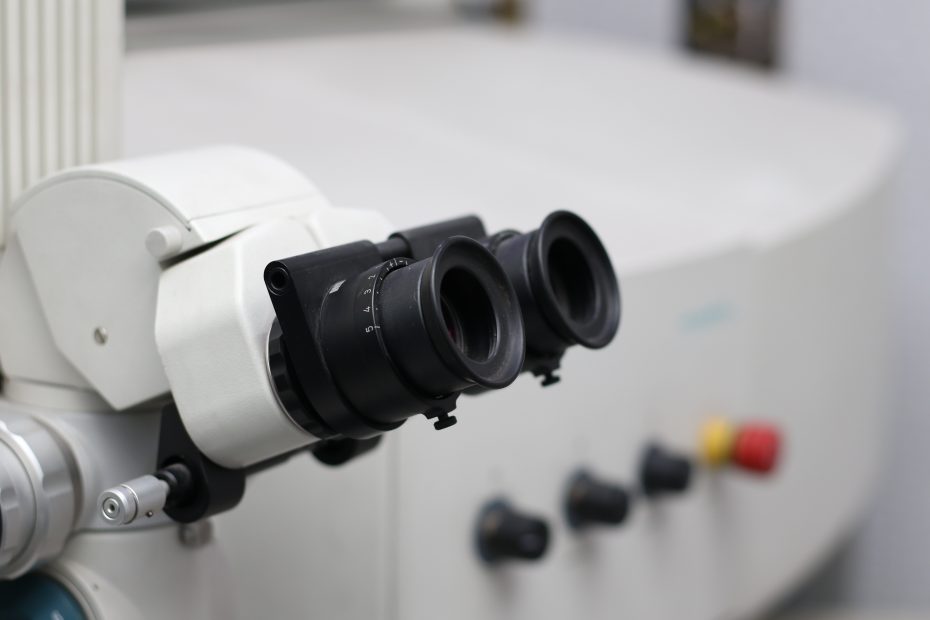So much of the microcosm around us is filled with tiny, living creatures, from the mites that crawl along our eyelashes at night to tardigrades that have been dubbed the most resilient creatures on Earth despite being as small as 0.5 millimeters in size. What’s more, there are probably millions of smaller animals that have yet to be discovered.
Microscopes open a door for us to understand the microscopic world, enhance our vision, and allow us to directly observe small objects that cannot be seen by the naked eye. They do this by zooming in on things to increase the amount of detail we can see. As such, they are one of the most widely used tools in science.
See more details with a microscope
Microscopes increase the amount of detail we can see. Merely 0.5mm in size, the mites are barely visible to the naked eye, and under a scanning electron microscope, you can see differences in the length and shape of individual hairs.

Different types of microscopes can show us different amounts of detail (they have different resolutions). Electron microscopes have a much higher resolution than light microscopes, so we can see more detail with them than with light microscopes.
Microscopes allow us to see more details
Microscopes work by making objects appear larger. Micrographs generally must state the magnification, which helps to help the person viewing the photomicrograph understand what they are looking at.
Microscopes don’t just make what we can already see bigger, likewise, microscopes increase the amount of detail we can see. Another word for the level of detail we can see is “resolution”.

Thinking about solutions
Scientists think of resolution as the ability to tell that two objects that are very close together are different objects rather than one. The naked eye can distinguish (resolve) two objects (such as grains of sand) that are about a tenth of a millimeter apart—anywhere closer than that, and we see the two objects as one shape.
If we look under a light microscope at the highest magnification, we can distinguish objects that are closer than a micron (thousandth of a millimeter) apart. If we try to zoom in even further, we won’t be able to see any more detail than this – as in the digital photo above, the microscope will reach the limit of its resolution.

Resolution of the microscope
Different types of microscopes have different resolutions. Light microscopy allows us to distinguish objects as small as bacteria. Electron microscopes have higher resolution — the most powerful resolution that allows us to distinguish individual atoms.
Understand the limitations of resolution
Scientists have figured out why we can’t see infinite detail under a microscope. They found that anything smaller than half the wavelength of the microscope’s illumination source is invisible under the microscope. Light microscopy uses visible light (minimum wavelength of 400nm, or less than a thousandth of a millimeter). This means that we’ll never be able to see anything smaller than about 200nm (about the width of an average-sized bacterium) using a light microscope (indeed, many light microscopes can’t get close to this resolution because of lens quality).
What is resolution?
Resolution refers to the ability to see two structures as two separate structures rather than one blurry point.
A good example is, flying through the forest. When you look out the window of an airplane, you see lots and lots of trees, but you don’t see the details in the forest. If you get closer to the forest, you start to see more and more resolution, you start to see the leaves, the branches, the bark.
The resolution comes from the wavelength of the illumination source we use. There is a physics formula that tells us that any structure smaller than half the size of the wavelength of the illuminating source becomes invisible.
The resolution comes from the wavelength of the illumination source we use and refers to the ability to distinguish the minimum distance between two objects under certain conditions.
In the field of optics, resolution refers to the ability to distinguish the smallest distance between two objects. The wavelength refers to the wavelength of light, which is an important parameter in the field of optics.
There is a close relationship between resolution and wavelength.
In the field of optics, the size of the resolution is closely related to the wavelength. The size of the resolution is inversely proportional to the wavelength. In other words, the smaller the wavelength, the higher the resolution and the smaller the objects that can be resolved. Conversely, the larger the wavelength, the lower the resolution, and the larger the objects that can be separated.
This relationship can be expressed by a simple formula: resolution = 1.22 × wavelength / numerical aperture. Among them, the numerical aperture refers to the ratio of the aperture of the objective lens to the focal length.
This formula shows that resolution is directly proportional to wavelength and inversely proportional to numerical aperture.
Therefore, if you want to increase the resolution, you can use a light source with a shorter wavelength, or use an objective lens with a larger numerical aperture.
White light has a wavelength of 400-700 nanometers, so what we call any light smaller than 200 nanometers is invisible. However, the wavelength of electrons is measured in picometers, or one-trillionth of a meter, so in theory, you should be able to see objects as small as picometers.
Use electrons instead of light
The limitations of the light microscope led to the development of the electron microscope.
Just as light has a wavelength, the movement of high-speed electrons also has a wavelength. Electrons have wavelengths thousands of times shorter than visible light, and electron microscopes use beams of electrons rather than beams of light to form images, thus overcoming the resolution limitations of optical microscopes.
So scientists predict that electron microscopes will be able to resolve objects thousands of times smaller.
The magnification of the electron microscope can be very high, and it can detect objects with a size of about one-twentieth of a nanometer (10-9m). This enables the electron microscope to observe tiny structures and details such as atoms, molecules, and cellular organs.
The wavelengths at which electrons move are measured in picometers (billionths of a millimeter), and electron microscopes should theoretically be able to see even smaller objects than they currently are. But the resolution is currently limited due to technical problems with viewing samples, but it may eventually be possible to view objects at the theoretical resolution limit of an electron microscope.
Summarize
It should be pointed out that although magnification and resolution are important indicators of the microscope, they are not the only factors that determine the performance of the microscope.
Other factors such as depth-of-field, contrast, sensitivity, sample preparation techniques, etc. will also have an impact on the effectiveness of the microscope.
Therefore, when choosing a microscope, various factors need to be considered comprehensively, and the most suitable microscope type should be selected according to the needs of specific applications.
